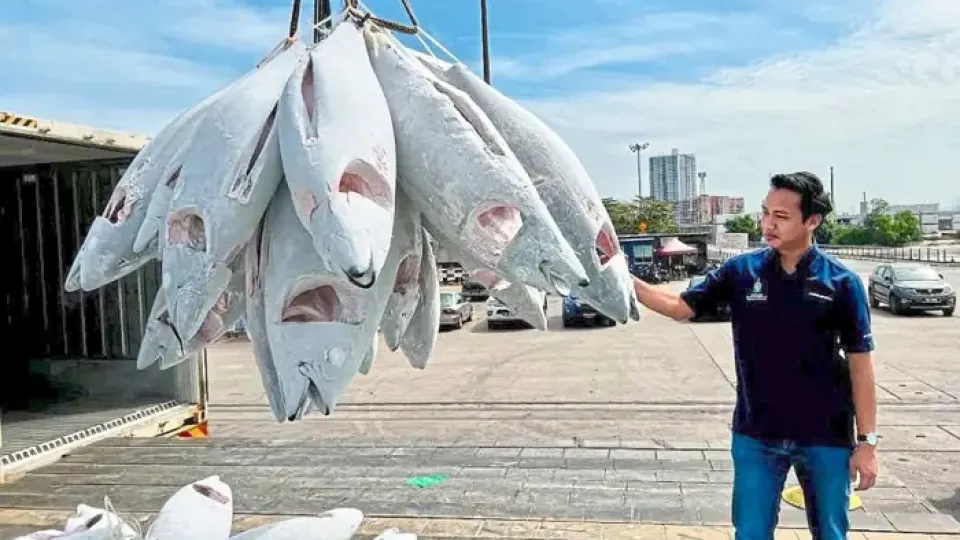
Arya News - The state agrotechnology, food security, and cooperative development committee chairman said figures from the Fisheries Department showed 431,000kg of tuna worth RM7.76mil were brought in 2024, more than double the 177,320kg in 2023.
GEORGE TOWN – As the tuna hub of Malaysia, Penang had more than twice as much tuna last year compared to the previous year, says Fahmi Zainol.
The state agrotechnology, food security, and cooperative development committee chairman said figures from the Fisheries Department showed 431,000kg of tuna worth RM7.76mil were brought in 2024, more than double the 177,320kg (RM3.19mil) in 2023.
He said the increase reflected Penang’s growing role in the tuna industry, which has been developing since the early 2000s.
Recognising the industry’s potential for further growth, he said the Fisheries Department has rolled out several initiatives to attract investment.
“These include incentive schemes such as the Small and Medium Agro-based Industry Expansion Programme (SPeKS), the Agropreneur Muda Grant Programme (GAM) for youths aged 18 to 45, and the zero-interest Agropreneur Financing Scheme (TUT) supported by the state government,” he told The Star in an interview.
“Other efforts include the provision of cold room facilities and processing equipment, the development of seven new tuna-based products, and the establishment of the Tuna Product Excellence Centre in Labuan,” he said.
Fahmi said the Fisheries Department is also facilitating links between vessel operators and downstream entrepreneurs to secure a steady tuna supply, while infrastructure upgrades at landing sites like Dermaga Dalam in Butterworth will strengthen the supply chain from sea to processing facilities.
He said some of these tunas are temporarily kept in Butterworth before being exported to international markets.
He said international trade missions have been used to promote investment opportunities in Penang’s tuna sector globally.
“The strategic location of Penang near international maritime trade routes, combined with a robust logistics network through Penang Port and Penang International Airport, continue to bolster its appeal as a processing hub and attractive stopover point for foreign fishing vessels.
“The state’s well-established food and packaging industries further complement the growth of tuna-related activities.
“This trend supports Malaysia’s ambition to strengthen its role in the global seafood supply chain.”
In addition to acting as a transit hub, Fahmi said tuna is also imported from countries like Japan to meet growing domestic demand.
He said the imported fish is distributed for local consumption, especially in urban areas with a high demand for premium seafood.
Fahmi said that although there is no precise data on the total number of jobs created within the tuna sector, it is clear that the industry is driving employment across fishing, processing, logistics and export services.
He said local fishermen and operators have already seen tangible benefits, with tuna exports fetching significantly higher prices than domestic sales.
He said there are also positive spillover effects in related sectors such as vessel repairs, fuel supply and marine services.
“Looking ahead, industry players expect this year to bring further expansion, driven by the recent issuance of 16 tuna vessel licences to Astana Conglomerate Sdn Bhd.
“This will boost Malaysia’s tuna harvesting capacity and generate more economic activities.”
Fahmi added that in recent years, the export values of tuna have reflected the industry’s volatility and recovery efforts.